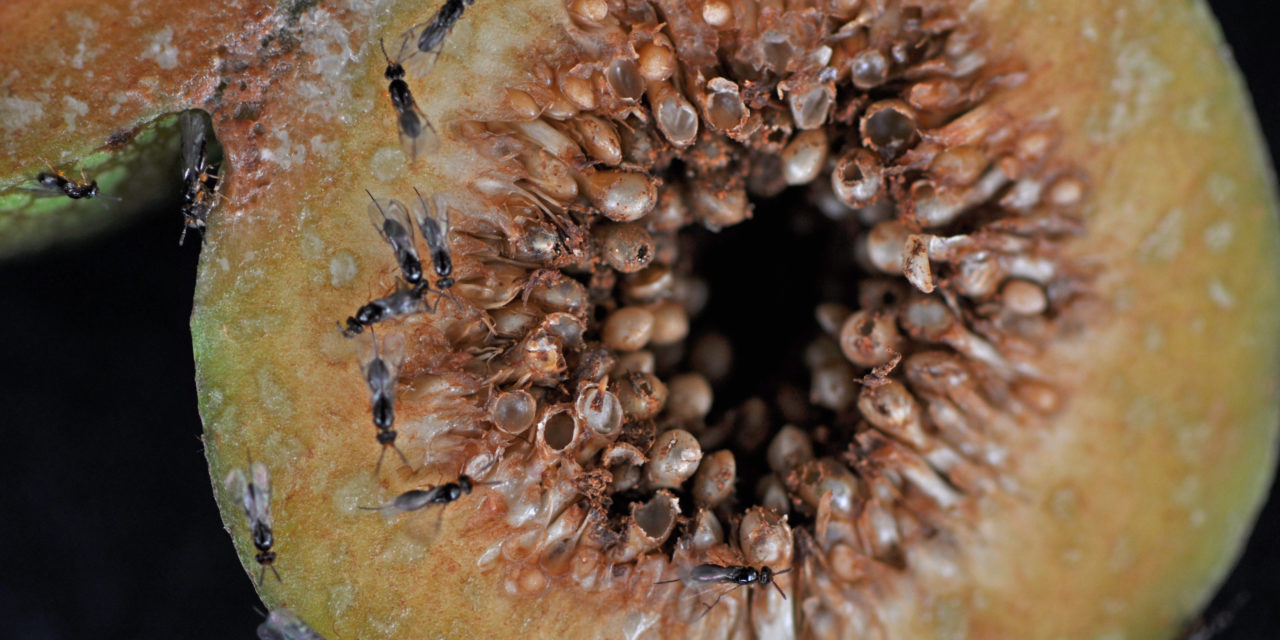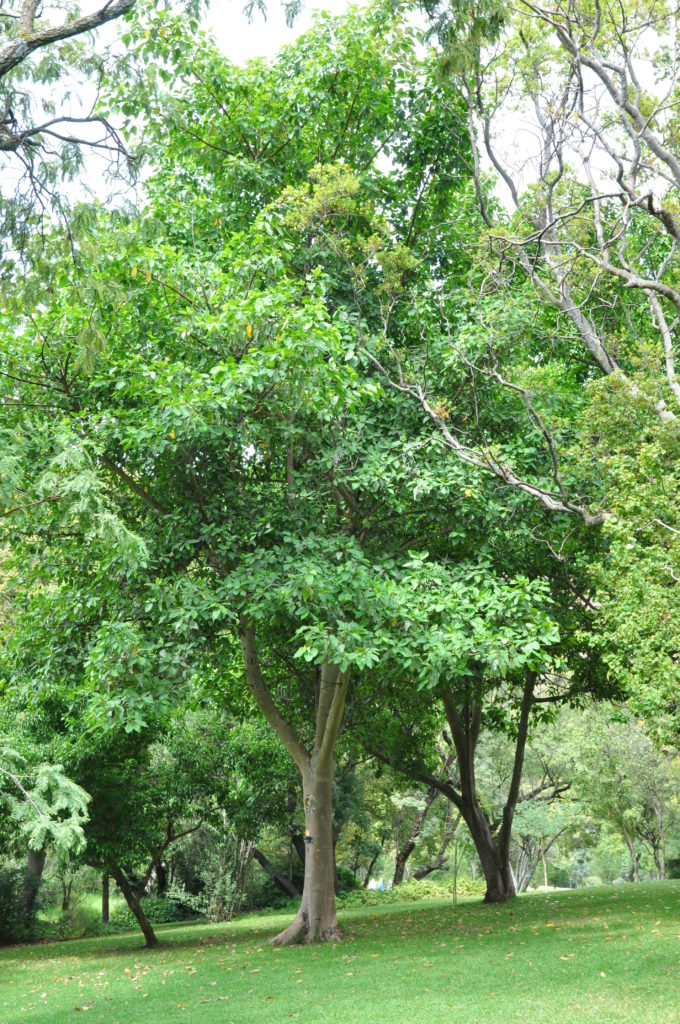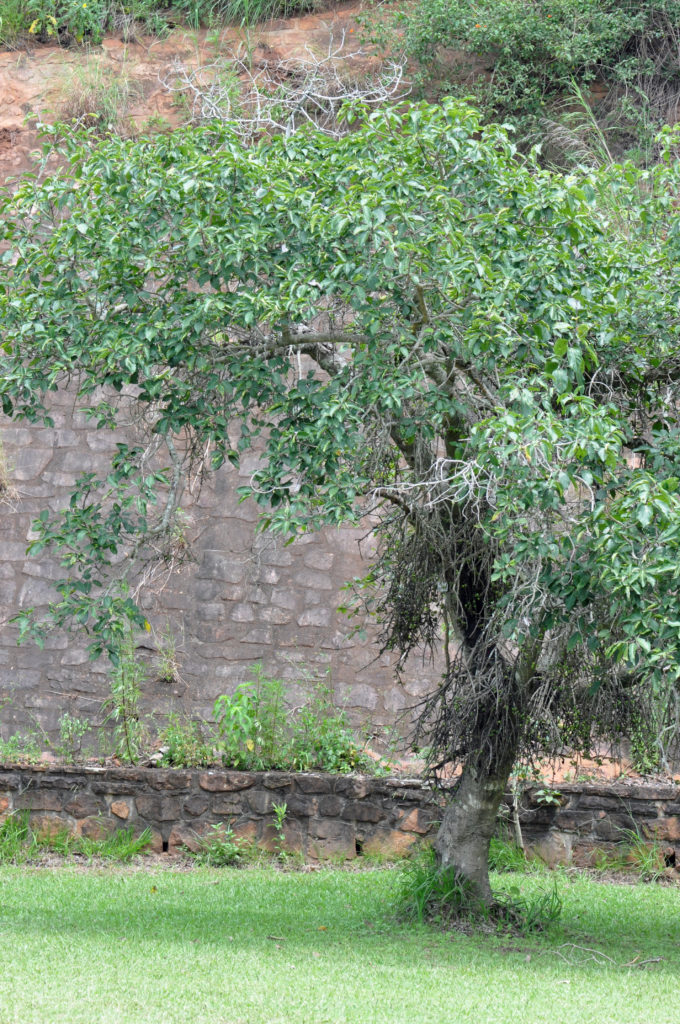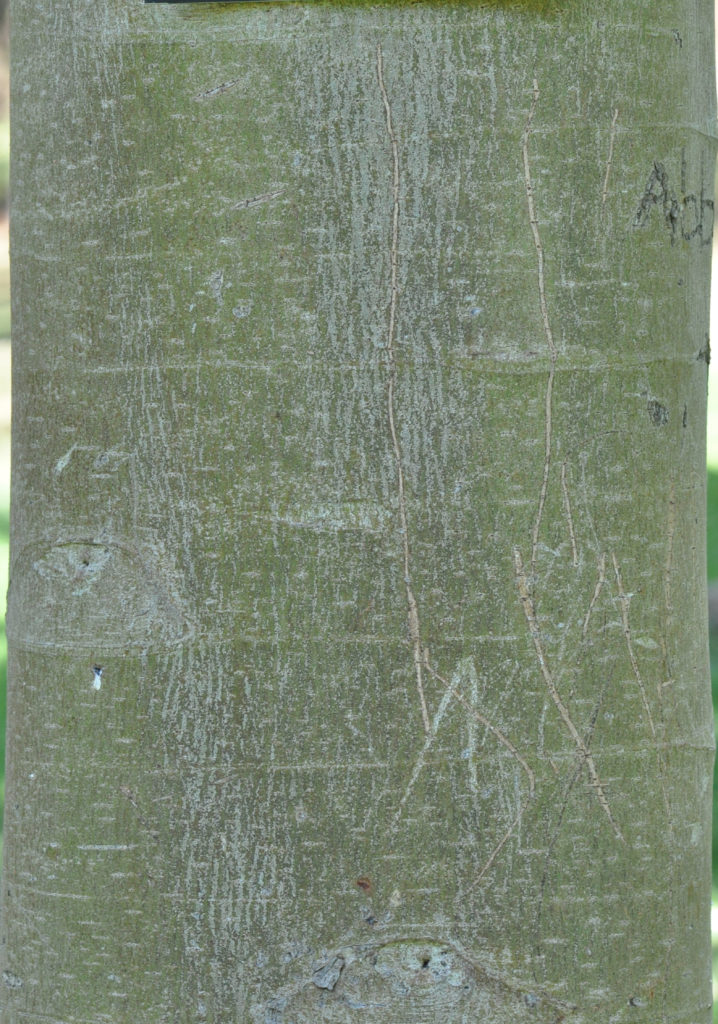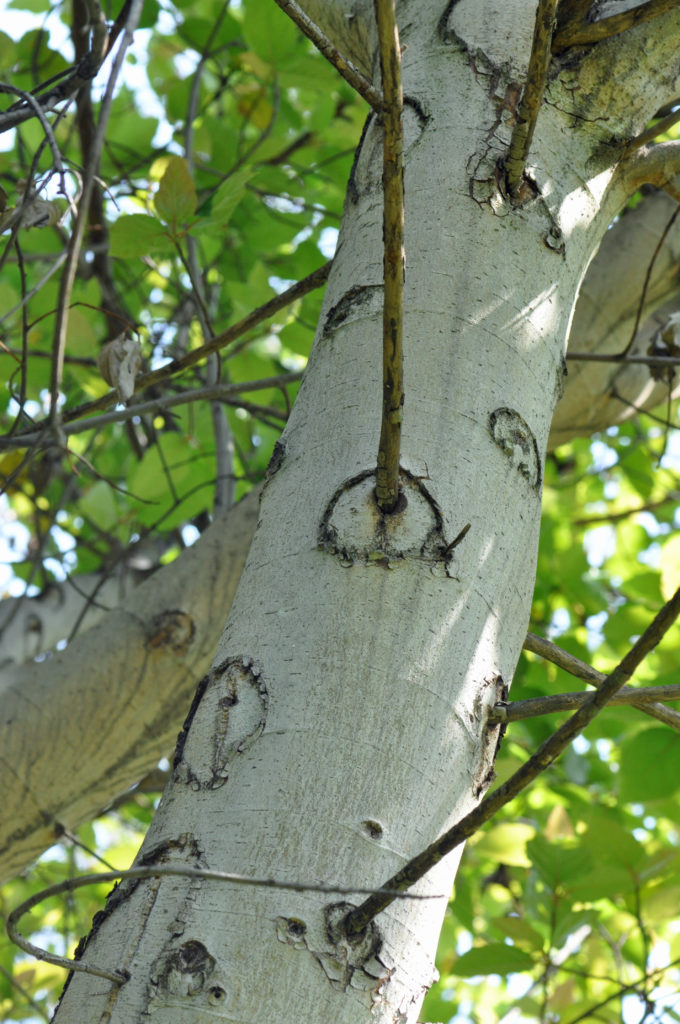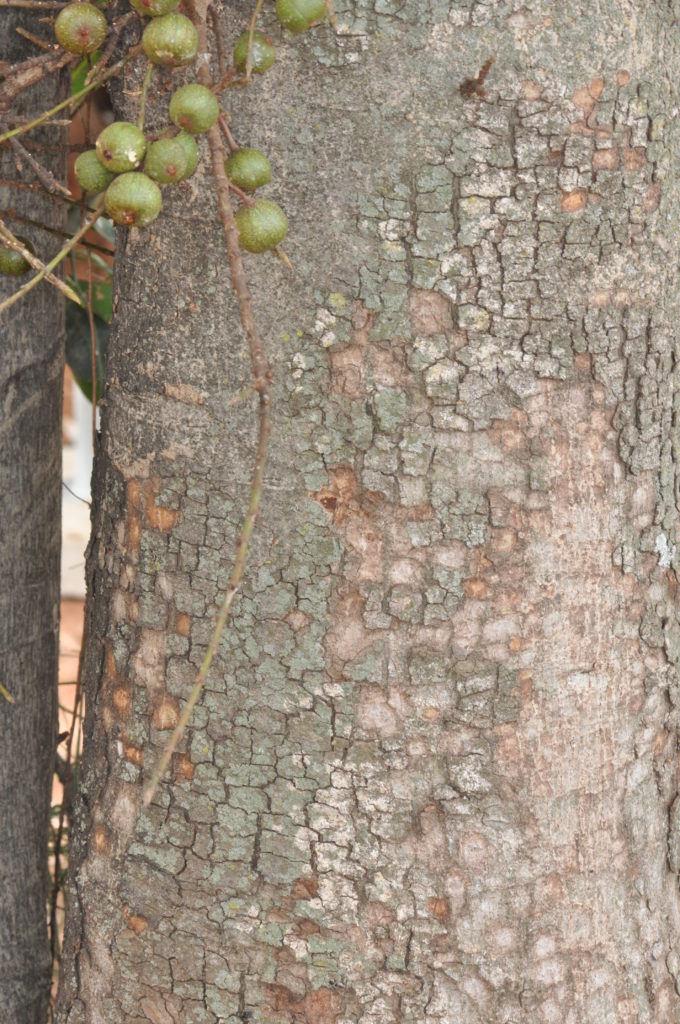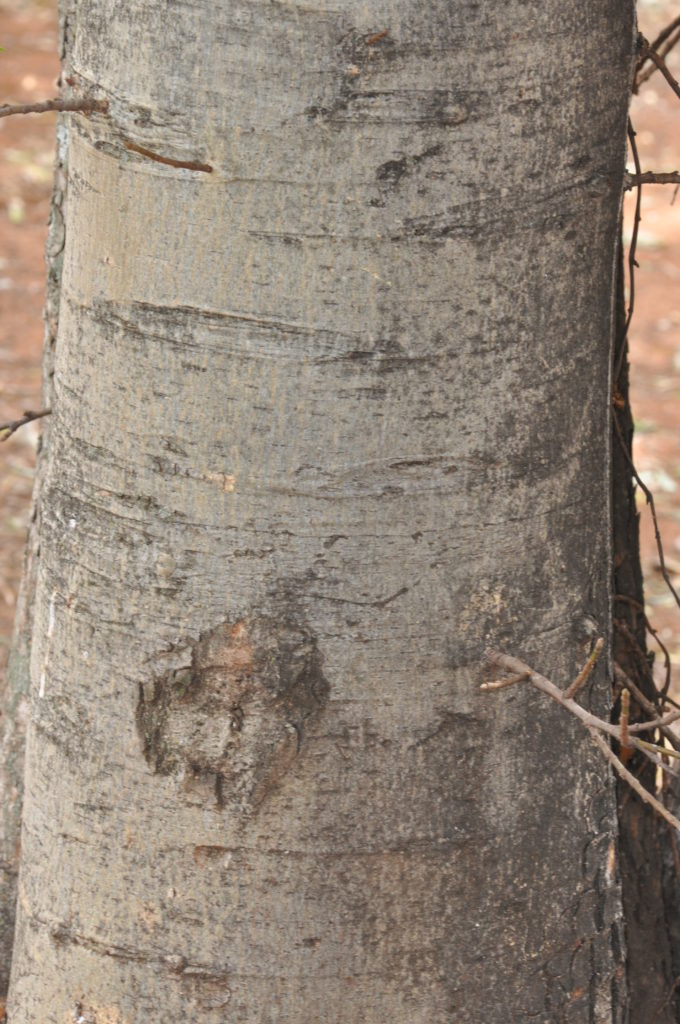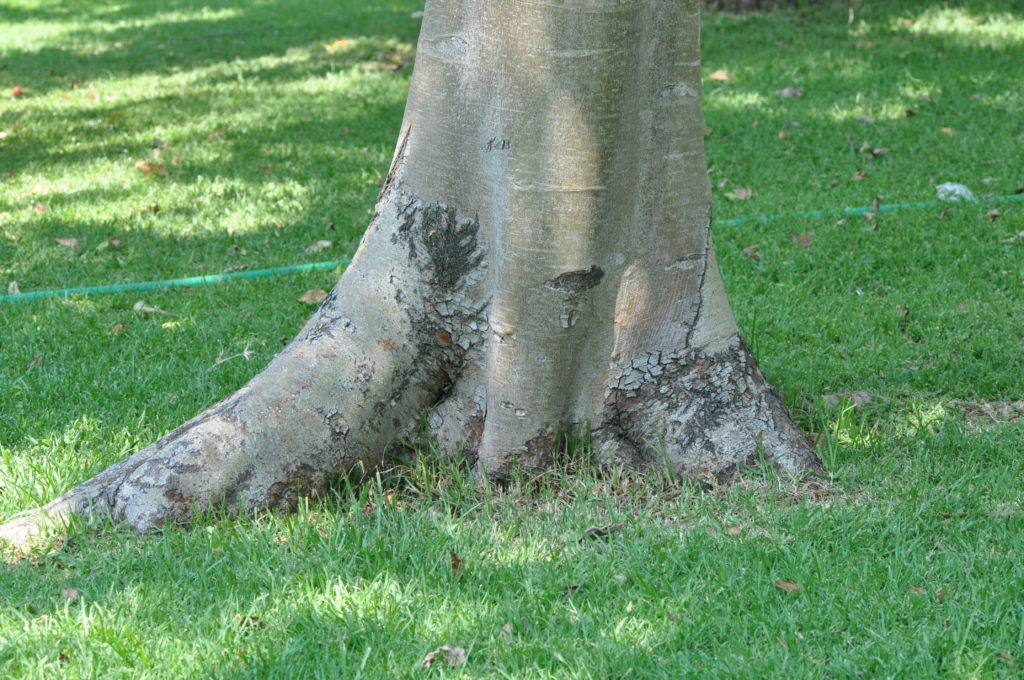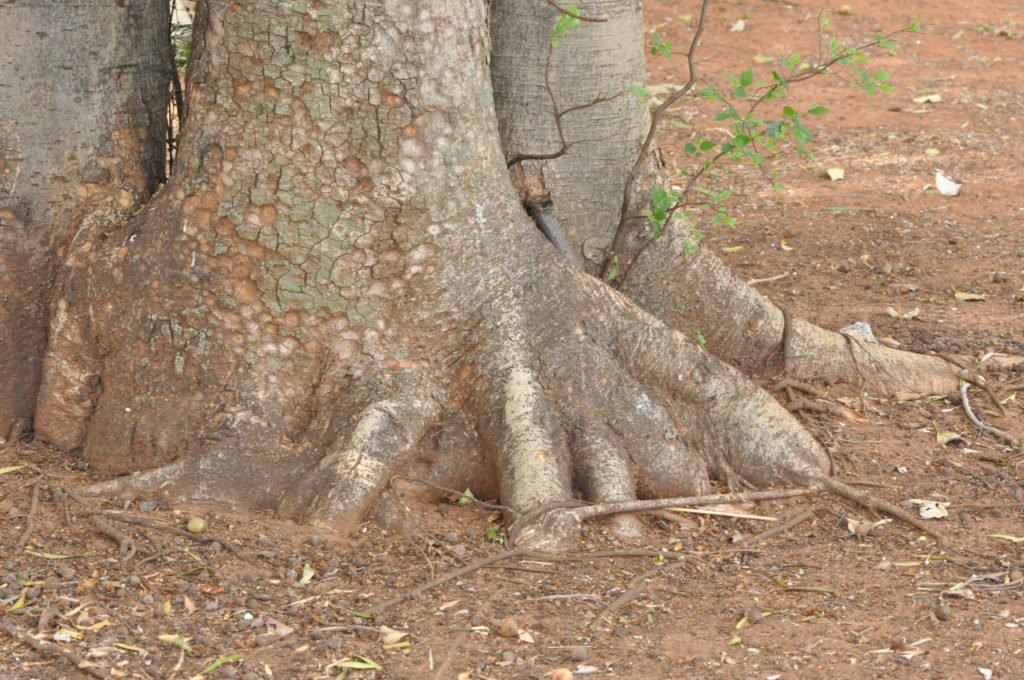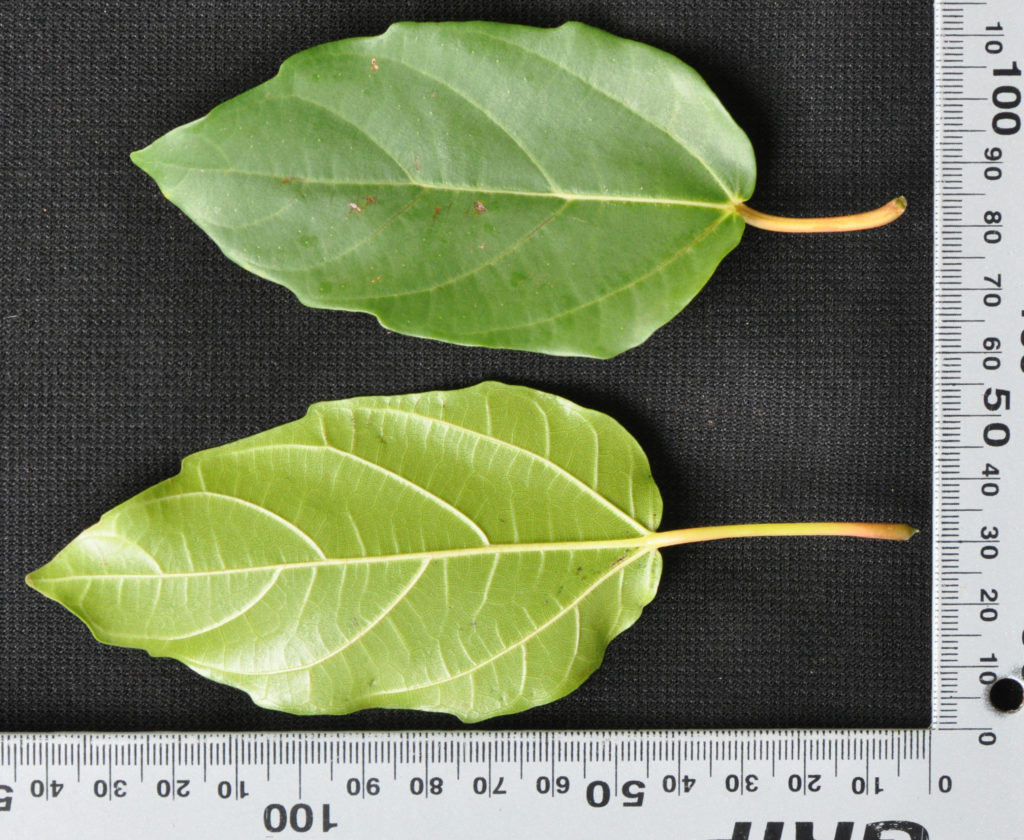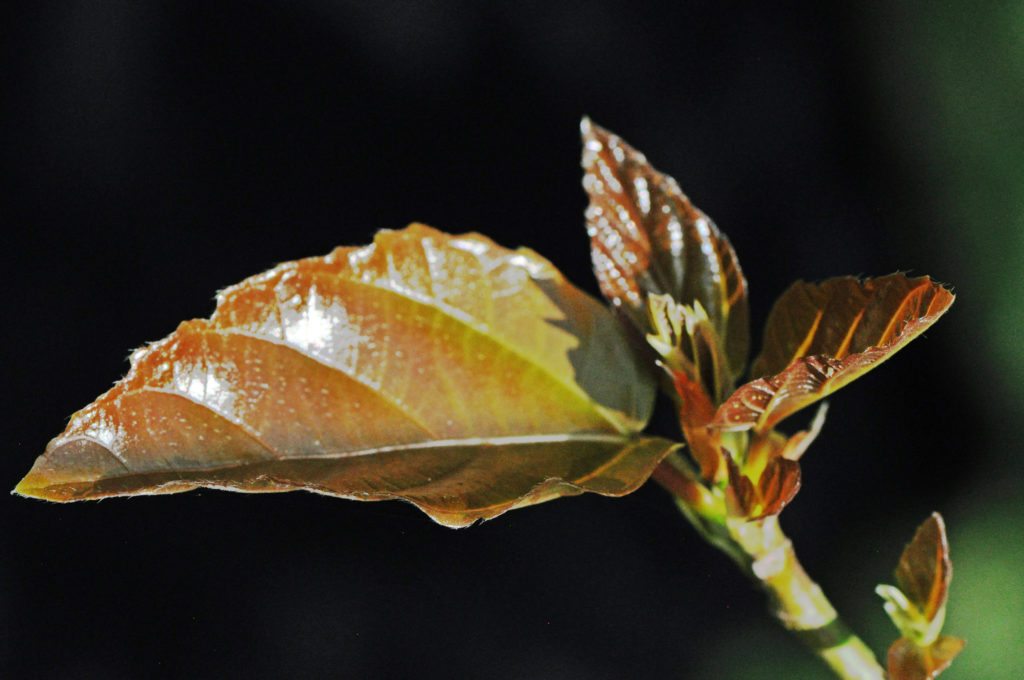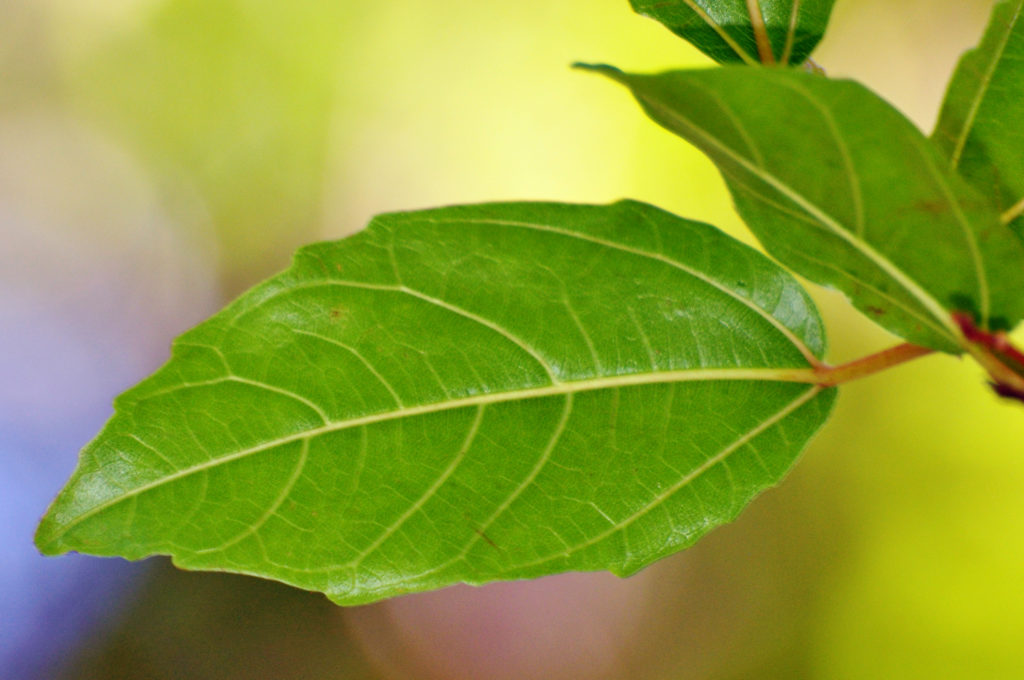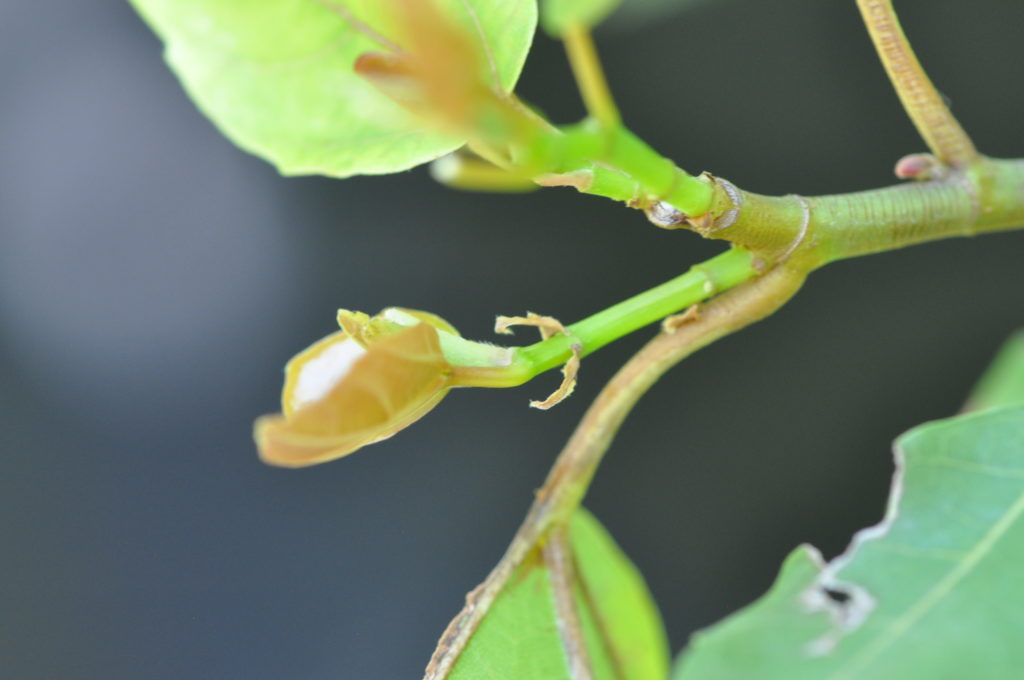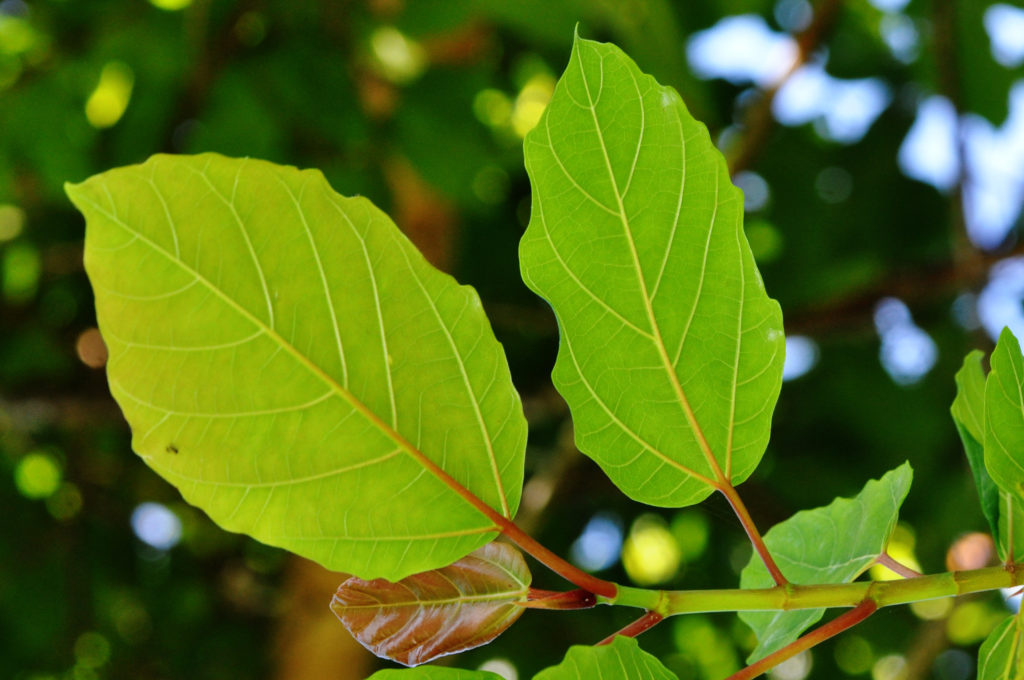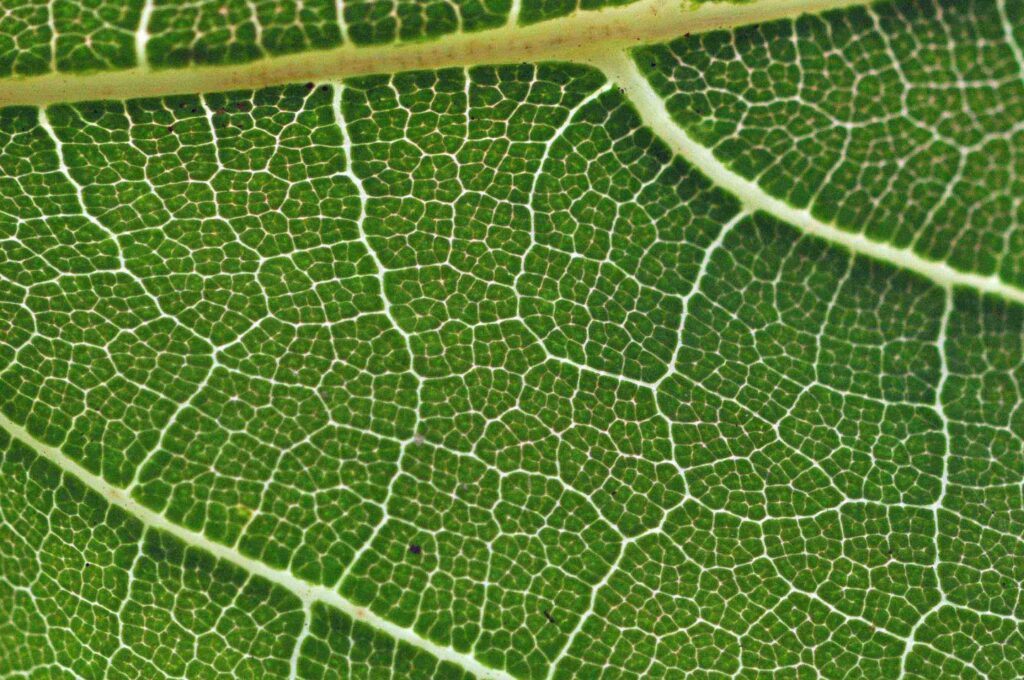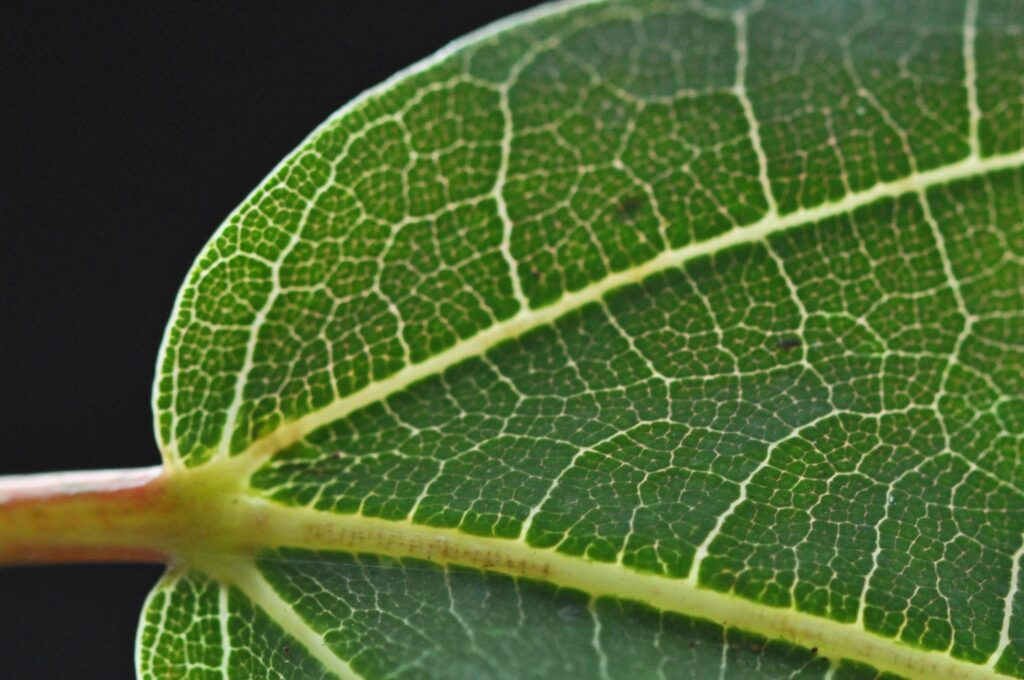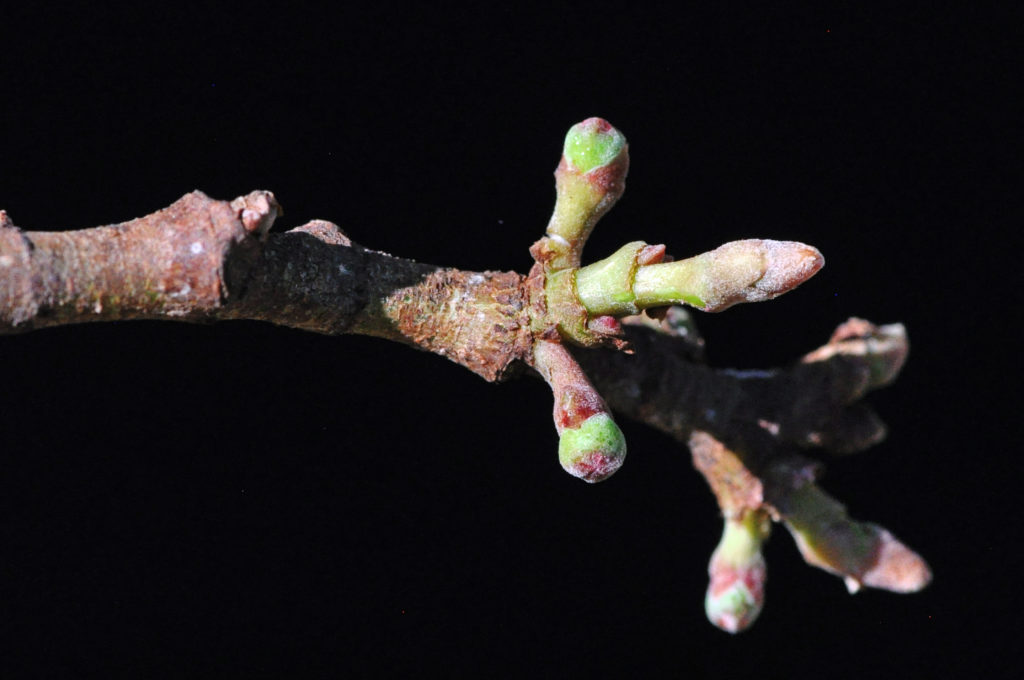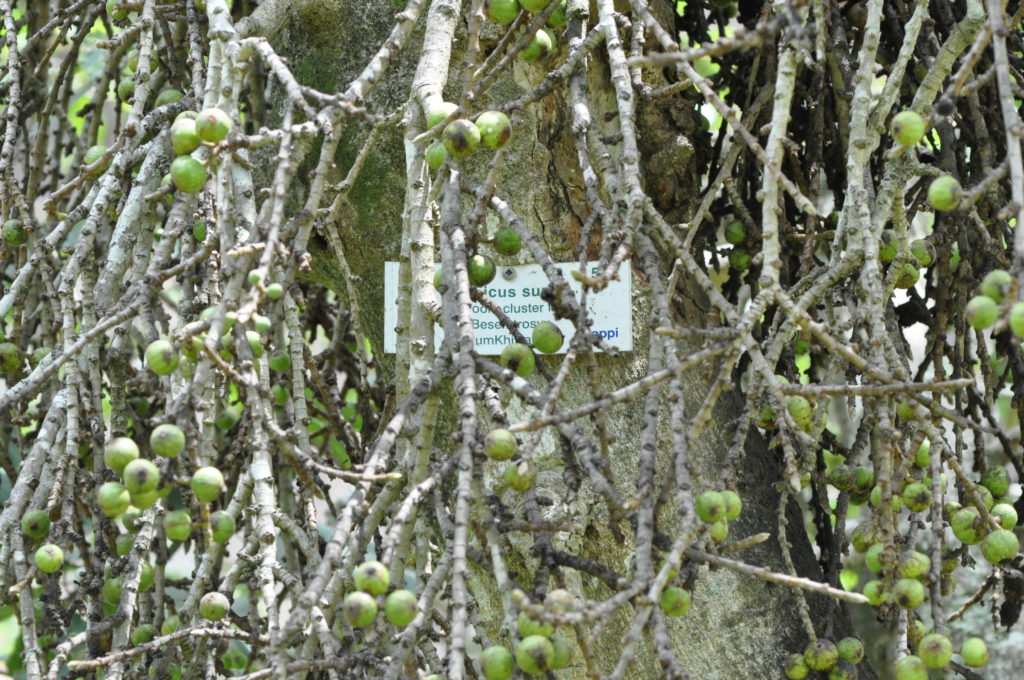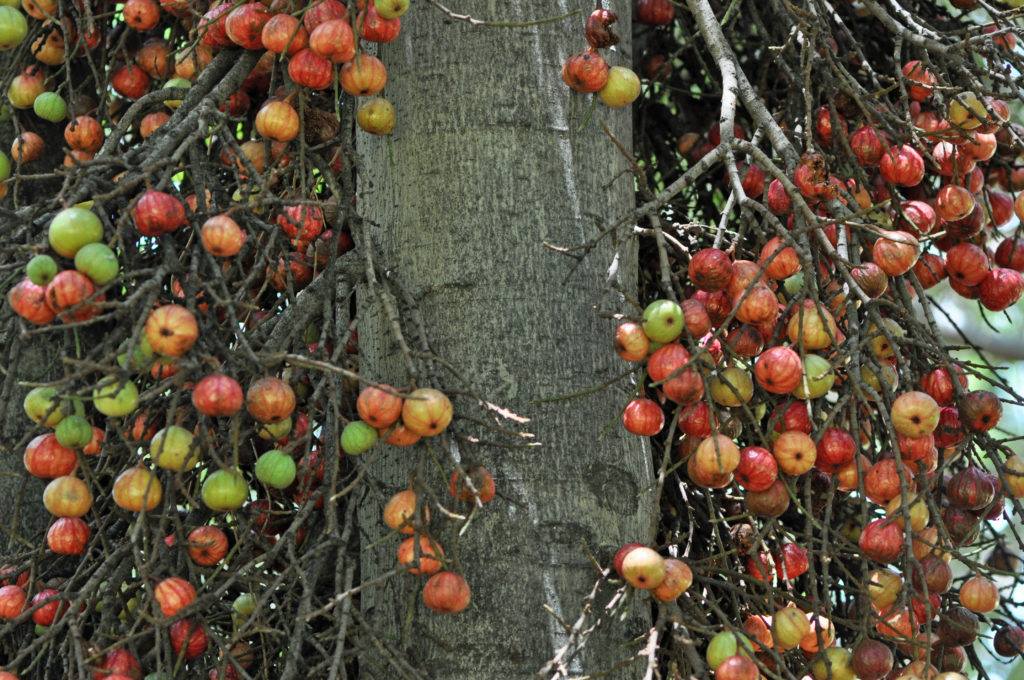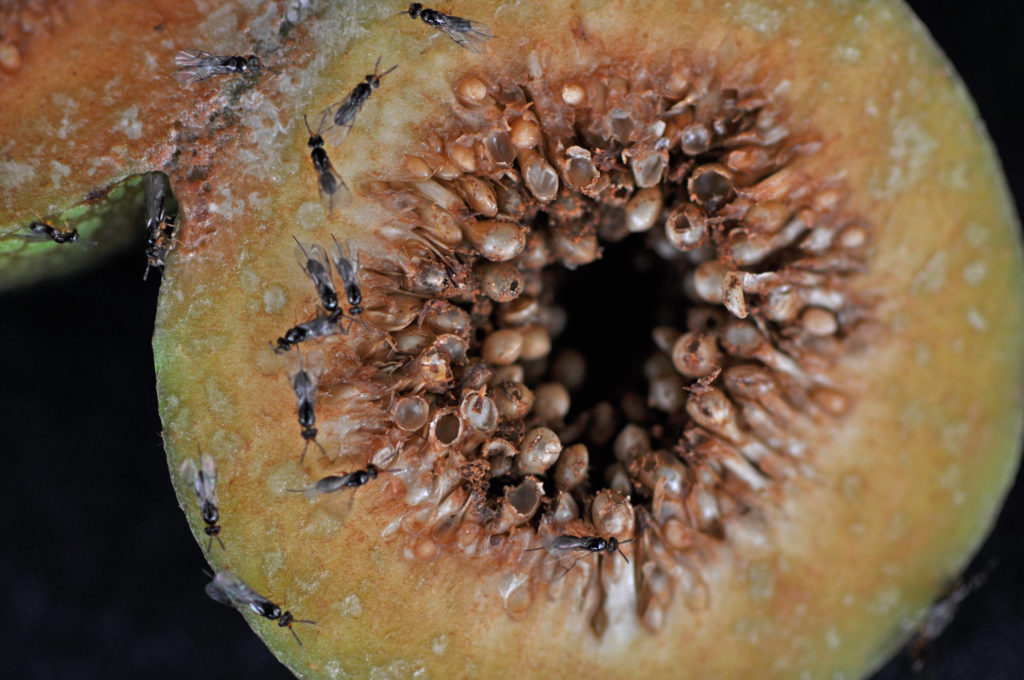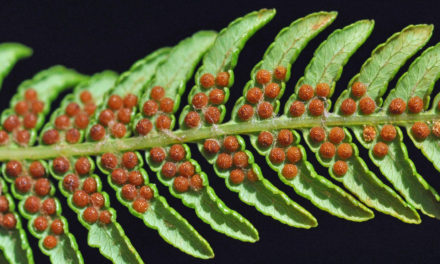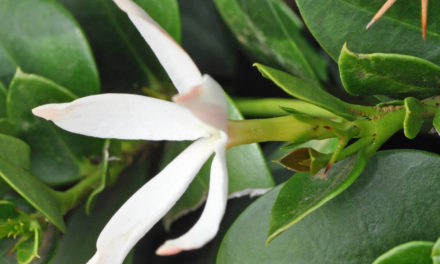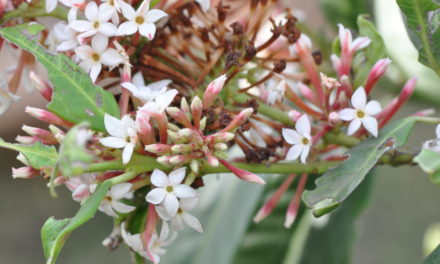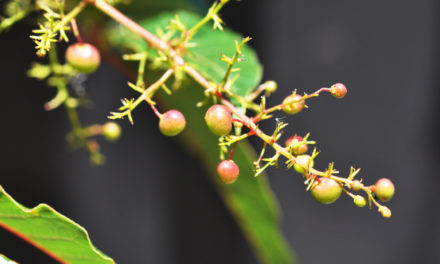General Info – summary
This non-strangler fig Tree is up to 12+m high with a light, smoothish bark and wide spreading roots. Damaged parts leak non-toxic milky latex. Simple, stipule-lacking Leaves are 3-veined from the base; the margin may have small teeth. The tiny monoecious Flowers occur in a syconium and are specific wasp pollinated in a mutualistic relationship. Ripened Fruit is a reddish-yellow, relatively large edible fig.
Description
Ficus sur
Previous names Ficus capensis, Ficus mallotocarpa, Sycomorus capensis, Ficus lichtensteinii.
SA Tree No. 50.
Common names: (Afr) Besembosvy, Besemtrosvy, Besem-trosvy, Bosvy, Bosvyboom, Bosvyeboom, Grootvy, Koeman, Komaan, Malabar Tree, Suurvy, Wildevy, Wildevyboom, Wildevyeboom. (Eng) Broom Cluster Fig, Bush Fig, Cape Fig, Cape Wild Fig, Fire Sticks, Kooman, Kooman Fig, Wild Fig. (IsiNdebele) Ikuwu, Likwani, Mouwane, Umkhiwa, Umkiwa. (isiXhosa) Iwane, Ikhiwane-lasendle, Mkwane, Umkhiwane, Umkwane, Amakhiwane Ingobozweni, Intombi Kayibhinci, Intombi-kayibhinci, Umkhiwane. (isiZulu) Ingobozweni, Umkhiwane. (Northern Sotho) Mogo, Mogo-tshetlo, Mphai, Umkiwa. (Setswana) Mphayi. (siSwati) Umkiwane, Umkhiwane. (Tshivenda) Muhuyu, Muhuyu-lukuse, Muhuyu-ngala. (Xitsonga) Ankuwa, Nkuwa, Xinkuwana, Mphai.
Family: Moraceae (fig or mulberry family). Trees are evergreen and have milky or watery latex present. The simple Leaves are alternate or opposite and 3-veined from near the base. They are usually entire, and all leaves have stipules. Plants are monoecious or dioecious and flowers are unisexual. The Perianth of indigenous species contain sepals but no petals. Male flowers have up to 6 stamens. Female flowers are inconspicuous and lack staminodes. The superior or inferior Ovary has 1 locule with 1 ovule and 2 styles are often present. The compound Fruit contains various Seeds. The family has 37 genera and about 1 100 species.
Name derivation: Ficus – Latin for fig. sur – Arabic name for this species. The genus Ficus has 36+ species in southern Africa and 25 in South Africa.
Conservation: National Status: L C. (Least Concern). Assessment: 2005 (J.E. Burrows and J.E. Victor). It is only a protected tree in Ethiopia.
Tree
This non-strangler, medium sized Tree ranges in height from 12m to 25m (in forests). This tree may have a large spreading Crown – especially when growing in the open. Trees have thick Trunks up to 1m+ wide and are often buttressed (photo 336 + 606). It may be a sprawling tree with many trunks. Leafless branches bear figs. When damaged, all parts ooze a non-toxic milky Latex. The almost white or pale to dark grey Bark (photos 624 & 607) may have a light green tinge (photo 261). It is relatively smooth, becoming darker and roughish with age (photo 605). In F. sur the Roots are shallow and spreading. F. sycomorus is similar but has yellowish bark and the smaller leaves are rounder.
- 710. 2016/04/05. Walter Sisulu NBG. Photo: David Becking.
- 62. 2015/02/12. Vernan Crooks NR. Photo: David Becking.
- 261. 2014/10/21. Walter Sisulu NBG. Photo: David Becking.
- 624. 2015/09/22. Walter Sisulu NBG. Photo: David Becking.
- 605. 2016/08/23. Pretoria NBG. Photo: David Becking.
- 607. 2016/08/23. Pretoria NBG. Photo: David Becking.
- 336. 2015/10/13. Walter Sisulu NBG. Photo: David Becking.
- 606. 2016/08/23. Pretoria NBG. Photo: David Becking.
Leaves
The green or sometimes grey-green and alternate or spiralled Leaves are simple (have a single blade that may have incisions that are not deep enough to divide the blades into leaflets). They are thinly leathery, usually smooth or slightly hairy below and the shape varies: ovate (egg-shaped), oval, or broadly elliptic. The tree is usually deciduous or slightly so. The New leaves are distinctly brownish, copper-coloured or shiny deep red (photo 332). Mature, wavy leaves are a dull green above, paler below and up to 22 x 13cm (photo 889). Leaves have 3 distinct veins arising from the base (photo 47). Parallel tertiary veins run perpendicular between the 3-6 lateral veins on each side of the midrib and close to 90 degrees to them (photo 49 – viewed against a strong light). They are almost like rungs on a ladder. Waxy spots are located in axils of secondary veins or at the base of midrib on the lower surface. The Apex is broadly tapering to rounded and the Base is square, rounded, slightly lobed or cordate (heart-shaped – photo 47). The Margin has small often widely irregularly spaced teeth that are dentate (with sharp, spreading, rather coarse indentations or teeth – photo 889). The leaf may also be entire (with a continuous margin, not in any way indented). The Petiole (leaf stalk) is up to 9cm long, furrowed on the upper side and reddish – when youngish (photo 88). Stipules (basal appendages of the petiole) are papery and between 1 and 3,5cm long. They are caducous (an organ or part of which is easily detached and shed early – photo 552).
- 889. 2015/11/17. Walter Sisulu NBG. Photo: David Becking.
- 332. 2015/09/15. Walter Sisulu NBG. Photo: David Becking.
- 263. 2014/10/21. Walter Sisulu NBG. Photo: David Becking.
- 552. 2016/02/16. Walter Sisulu NBG. Photo: David Becking.
- 88. 2104/04/29. Walter Sisulu NBG. Photo: David Becking.
- 49 2019.06.25 Glen Eden. Photo: David Becking.
- 47. 2019/06/25. Eden Glen NR. Photo: David Becking.
Flowers
Trees are Monoecious (having both male and female reproductive organs on the same plant). Figs possess an amazingly arranged Flower head called a Syconium. Essentially this consists of a receptacle (is that expanded tip of the flower stalk from which the floral parts develop) whose perimeter substantially increases in size and folds over forming the fig shape. The hollow fig ends with a tiny opening called an Ostiole. This is covered with scales making exit for wasps impossible and entrance difficult. Only the female pollinating wasps (specific for each species attempt do so. In this case three species of the genus Ceratosolen including Ceratosolen capensis in South Africa) attempt to enter and usually injure themselves in the process. Around the inner boundary of the hollow fig receptacle, large collections of extremely small flowers develop. In the Male Flowers, there are 3 overlapping perianth (a collective term for the calyx and corolla) lobes and 1-3 stamens present. The ovary is absent or vestigial (imperfectly developed, non-functional relic from the past). In the Female Flowers, there are no stamens and usually fewer perianth lobes.
The Female wasp enters the fig through the ostiole (photo 428 under Fruit) with her pollen sacks laden with pollen that she has inadvertently collected. She then likewise, unintentionally, pollinates those female fig flowers with longish styles. These longish styles prevent the wasp from laying eggs into the Ovary below. The wasp thus targets the flowers with short styles and lays a single egg in each one. These female flowers react producing a gall that nourishes the developing larvae. The larvae eventually pupate and become adults (photo 596). The robust Male wasps develop first, fertilize the young Female wasps and then burrow through the wall of the fig, allowing oxygen to enter. The young female wasps then unconsciously load pollen from the male flowers, escape from the fig and make their way to another fig of the same species (photo 596 – just prior to escaping), to continue the life cycle. This is an excellent example of a mutualistic relationship (a beneficial relationship between 2 different species – the fig tree and the wasp). The 3-4cm wide Figs develop on leafless branches (photo 62 – under Tree), the trunk or other branches. Some fruit may even develop on shallow roots. A great number of figs are usually produced. Nearly a week after the wasps have left, the figs with their fertilized seeds, ripen and develop into a multiple fruit. This initially green almost spherical or pear-shaped fruit becomes a reddish yellow (photo 428 under Fruit) colour with pale cream spots. This ripening is due to the oxygen induced Ethylene production. Here the atmospheric oxygen enters through the opening caused by the escaping male wasps. Ethylene is a small odourless and tasteless hydrocarbon gas. This gas is involved in the ripening of the fruit including causing the fruit to change colour, texture and soften. Commercially ethylene is used to ripen fruits like tomatoes, bananas and pears.
- 68. 2016/10/25. Pretoria NBG. Photo: David Becking.
- 59. 2015/02/12. Vernan Crooks NR. Photo: David Becking.
Fruit
The pear-shaped or almost spherical Figs may occur in large numbers (photo 428). They often develop on many leafless down hanging, older cluster branches (photo 62 under Tree), that are up to 1m long. Figs may also develop on the trunk and roots – even underground. Figs are larger on this tree than on many other indigenous fig trees, are up to 4cm in diameter and rest on a stalk that may reach 1,3cm long. The green surface turns pink to red and is mottled with cream when ripe (photo 428). Many small seeds are produced. In photo 596 of a recently cut fig, the not yet escaped wasps and the female flowers from which they escaped are visible. (Ripe fruit produced-year round but mainly from Sep-Mar in the South Africa).
- 428. 2018/01/16. Pretoria NBG. Photo: David Becking.
- 596. 2016/08/23. Pretoria NBG. Photo: David Becking.
Distribution & Ecology
These non-strangler Trees usually occur near a water supply. Trees thrive in moist, frost-free areas at almost all altitudes from the coast upwards. Trees growing in the open have a shorter bole (trunk) and more spreading branches. They occur in all forest areas – from the Western Cape (Knysna), through the Eastern Cape e.g. Port St Johns, KwaZulu-Natal, Mpumalanga, Limpopo including Swaziland, Botswana, Mozambique, East Africa and Saudi Arabia. Many animals feed on this tree. Birds and mammals consume the Figs and the small fig seeds pass through the digestive tract unharmed and are thus dispersed. (Sep-Mar). Leaves supply food for the larvae of the attractive Common Fig Tree Blue Butterfly (Myrina silenus), the African Map Butterfly (Cyrestis camillus sublineata), the Lesser Fig Tree Blue (Myrina dermaptera dermaptera) and the Accented Hawk Moth (Nephele accentifera). The fruit is eaten by most fruit-eating birds like the Puff-backed Shrike as well as by bats. This plant provides shelter as well food and is a good shade tree.
Ethnobotany
In the South Africa, all indigenous Ficus species have edible Fruit. The figs of this tree are among the largest of our indigenous figs. The Figs are sweet with an insipid flavour. These large figs can be made into jam and fig preserve. The fruit pulp may be riddled with insects. In places, the fruit is considered a fertility charm. Young Leaves can be cooked and eaten. Many animals, including cattle, goats and sheep, feed on this tree. The Wood is whitish or yellow with little distinction between heartwood and sapwood. It has a low density but is strong. This wood was once used for brake-blocks and the interior bed-planks of wagons. Today it is used to making drums, furniture, kitchen utensils, grinding mortars and for fuel. It is sensitive to borer attack and less so to termite attack. Wood can be used to make fire by friction – hence the common name “firesticks”. Here a pointed single piece of wood is rotated rapidly into a small hole in another piece of wood and eventually ignites. It is also used for fencing and string can be made from the Bark. Seeds (difficult to germinate) or Truncheons (stem cutting from a selected plant – used to produce genetically identically new plants) are used for Propagation. This fast growing plant makes a good shade tree but has aggressive, somewhat surface roots. Keep trees away from buildings. Local Medicine makes use of this tree.
References
Boon, R. 2010. Pooley’s Trees of eastern South Africa. Flora and Fauna Publications Trust, Durban.
Burrows, J.E. & Victor, J.E. 2005. Ficus sur Forssk. National Assessment: Red List of South African Plants version 2020.1. Accessed on 2023/06/10.
Burrows, J.E. & Victor, J.E. 2005. Ficus sur Forssk. National Assessment: Red List of South African Plants version 2020.1. Accessed on 2022/02/12.
Coates Palgrave, M. 2002. Keith Coates Palgrave Trees of Southern Africa, edn 3. Struik, Cape Town.
Lawrence, G. H. M, 1951. Taxonomy of Vascular Plants, The Macmillan Company, New York. Tenth Printing 1965.
Palmer, E. & Pitman, N. 1972. Trees of southern Africa, Balkema, Amsterdam, Cape Town.
Schmidt, S. Lotter, M. & McCleland, W. 2002. Trees and Shrubs of Mpumalanga and the Kruger National Park.
van Wyk, B. & van Wyk, P. 1997 Field guide to Trees of Southern Africa, Struik, Cape Town.
Woodhall, S. 2020. Field Guide to Butterflies of South Africa, edn 2. Donnelley, RR, China.
http://www.plantzafrica.com/plantefg/ficussur.htm
https://en.wikipedia.org/wiki/Ficus_sur
http://www.prota4u.org/protav8.asp?p=Ficus+sur
http://posa.sanbi.org/flora/browse.php?src=SP

